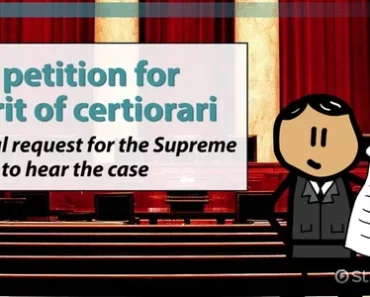
When writing a petition, you need to keep in mind the different reasons you need to provide. First, you must state the reasons why you need to remove the board member. These reasons should be specific enough and relate to the person’s actions and votes with regard to the organization. If possible, you can ask people to provide their own input for the reasons you need to remove the board member. In the main petition part, you should mention the mistakes that the board member has made.
Removal without cause
When the right person is elected to a board, you can present a petition for the removal of that person. Board members are usually volunteers who are elected or appointed by the organization’s membership. If the person is not performing their job, it may be time for a change. There are several reasons to remove a board member. Some of these reasons are outlined in your organization’s bylaws.
To start your petition, gather the information you need about the board member. Often, these documents are public and can be obtained via the Freedom of Information Act. If you’re going to use the Freedom of Information Act, make sure to provide a formal list of any violations. Try to be as specific as possible; include the dates and names of other people involved. If possible, gather copies of any correspondence with the board member.
Using personal intervention is another good way to find out why the troublesome board member is not contributing as much as they should. The board president will often arrange a small meeting between the chairperson and the member in question to discuss his or her lack of commitment to the organization. The meeting will help the president uncover the reasons for the board member’s lack of commitment and failure to fulfill his or her duties. The board member may then step down voluntarily and commit to the organization’s missions.
If the board member does not respond to the petition, it can be deemed invalid. There are several factors that can cause a petition to be invalid, including not being properly formatted. Properly formatted petitions should identify the directors who are seeking to be removed. Petitions that demand a special election must clearly state this fact. In addition, the petition must include the property address, city, and state.
Recall
There are many reasons for removing a board member. Sometimes a board member ceases to serve their duties, and others are unhappy with their contribution to the community. If this is the case, you may want to consider petitioning for the member’s removal. In either case, you must consider several factors before preparing your petition. Here are some things to consider when writing your petition. Identifying the right person to remove is important in determining whether the process should proceed smoothly.
To remove a board member, you must have at least twenty percent of community owners sign the petition. Also, the board member must attend at least one meeting to receive the majority vote. You can do this either in person or through an absentee ballot. In either case, you need to be more than 51% in total. Remember that the board member can win the petition, and if he or she does, they can challenge the decision.
To start your petition, contact the county board of elections. You can ask for a list of the board members in your area. Then, prepare a formal list of complaints against the board member. Be as specific as possible, stating when violations occurred and the names of other people involved. Also, include the signatures of all members of the board. A certificate of insufficiency is not necessary if you are not requesting the removal of a board member.
Once the board has been notified of the petition, they will have to convene a meeting and vote on whether to recall or remove the board member. It can take between twenty and eighty days for the board to take action on the petition. The removal of the board member may be difficult to achieve if the current board is refractory or uncooperative. Court action may be necessary to force the matter to a vote.
Recall and replacement on the same petition
If you have a board member whose term ends after a year, you may want to consider running a recall election. This process will allow you to vote for a new board member. In some cases, the current board may resist the recall petition and refuse to cooperate with the removal process. In such cases, a court action may be necessary to force the matter to be voted on.
You must notify members 30 days prior to the meeting, mail them a secret ballot with voting instructions, and send them two separate return envelopes. The election of a new director may be held at the same meeting as the recall vote. Alternatively, it may be conducted at a later meeting. This will depend on the language of the recall petition. Once the election has been held, the association may conduct the recall and replacement process on the same petition.
In these cases, the Board must select an independent election inspector. The inspector may be a manager, an outside entity, or individual members. Recall elections are often held with reverse cumulative voting rules, making calculations difficult. However, recall elections have their limitations. A majority of votes must be cast in favor of the recall and the replacement to determine whether or not the board member should be removed. It is important to note that the recall and replacement must be done in accordance with the law.
In some instances, formal dismissal may be in the best interests of the organization. This option may be less confrontational than other methods. Similarly, it may be easier to dismiss a member who is actively engaging in fraudulent activities. A board may also request that the member take a leave of absence in order to evaluate his or her performance. In the latter case, the board will likely ask the member to take leave of absence and if it is found that the situation is still unacceptable, the decision will be made in accordance with the bylaws.
Getting a lawyer involved in the process
If you’re writing a petition to remove a board director, you’ll want to ensure that you’re following the proper process. The wrong way to remove a director can result in disqualification by the court. Whether a director is disqualified by court judgment is another matter entirely, but it’s important to know how to proceed.
In some cases, the problem may be as simple as a disagreement over a decision. Perhaps the board member has stepped down, resigned, or is being sued. Regardless of the case, there are many reasons to get a lawyer involved in the process of writing a petition to remove a board member. It can help to get the legal perspective and help to minimize any mistakes in the process.
A lawyer’s help may also be necessary if you have a conflict of interest with the board member. There are certain times when a board member needs to be removed due to conflicts of interest. A lawyer can help you draft the right petition, while remaining mindful of the association’s bylaws. For example, a bylaw may require that a majority of board members must vote to remove a board member. But it doesn’t mean that a majority of board members must agree to the removal of a board member.
Removing a board member by majority vote
If a board member has been doing something that has been impeding on the smooth running of the development, it may be time to consider removing them. While this is never a pleasant situation, it is sometimes necessary. It’s also important to keep the conversation on a businesslike level and avoid personal discussions that could result in a conflict in the community. If you are considering removing a board member, here are some things to keep in mind.
The first thing to consider is whether it’s appropriate to remove a board member by majority vote. A majority of board members must agree to recall a board member. Recalling a board member is a legal procedure that requires two-thirds of the board. While a majority vote may not be sufficient to remove a director, a majority vote is generally necessary to remove a board member.
The second step to remove a board member is identifying the cause of the removal. A by-law will state a specific case for removal. For example, a director may be removed for failing to attend two consecutive board meetings, or for failing to meet the requirements of the organization’s by-laws. Another method is to ask the board member to resign personally or via telephone. The former option may be a bit more political than the latter.
The third step is to determine the removal procedure. In many cases, a board member may need to be removed for not attending meetings regularly, being inactive in general, or being obstructive. These circumstances should be addressed in the by-laws. A board member may have to serve for a set number of terms. As a result, it’s a good idea to limit the number of terms a board member can serve. Changing this rule is also a natural way to improve the board’s productivity.





